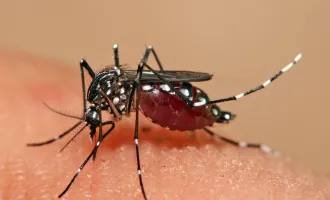Radical Proposal Regarding Postdoc Pay
Dr. Gregory Petsko, Chair of the National Academy of Sciences’ (NAS) committee on “The Postdoctoral Experience,” has proposed a thought-provoking solution to the problem of job scarcity for academic biomedical scientists and also to postdocs’ low pay — dramatically increase postdoc salaries, thereby decreasing the number of postdoctoral positions available.
The biomedical sciences have too many postdoctoral researchers competing for too few academic faculty positions. One way to ease this problem is to limit the availability of postdoctoral fellowships from funding organizations; however, this option is cumbersome and requires significant legislation. Instead of legislating change, Petsko suggests we should use basic economics.
“Let’s suppose, for the sake of argument, that we decide we are training twice as many people as we should. How do we shrink the enterprise by a factor of two? There’s an obvious way of doing that: We double the stipend,” said Petsko, in a recent interview with iBiology.
While Petsko’s argument is hypothetical, its assumptions are based on some uncomfortable facts: if we increase postdoctoral pay without radically changing how we fund research laboratories, only a fraction of current postdocs in the biomedical sciences can be employed.
Unlike the NIH’s recent recommendation by the Biomedical Workforce Working group, which recommends an increase in minimum postdoctoral pay from just over $39,000 to $42,000, Petsko’s proposal would radically change the face of postdoctoral research.
Underlying his plan is a desire to challenge many students’ primary goal of securing postdoctoral training. “It’s amazing how many postdocs seem to believe that this was an inevitable part of their scientific education,” Petsko said in the iBiology interview.
“You become a graduate student, and once you were done, of course, the next step was to become a postdoc. The postdoc has become the default. And I think that’s a huge mistake.”
Arguably, postdoctoral training should only be required for those who wish to establish themselves as independent researchers. If this became the case, far fewer postdocs would be competing for the limited number of academic faculty positions, because more PhDs would be entering other careers without requiring postdoctoral training.
That might be exactly what the biomedical sciences needs. With federal budgets running tight, postdoctoral fellowships are increasingly competitive, and many postdocs are under pressure either to secure their own funding or find a new position.
With too few faculty positions, postdocs further feel the need to publish in prestigious “boutique” journals such as Science, Nature and Cell — requiring years of long hours and no guarantee of acceptance — in order to stand out in the fiercely competitive faculty searches at academic institutions.
Given this often enormous pressure, one might expect postdoctoral pay to approach that of a job in the private sector, which can reach upwards of $60,000 or more for biomedical PhDs fresh out of graduate school.
However, postdoctoral researchers remain notoriously underpaid: The NIH minimum salary for postdocs, which is the standard pay for most biomedical researchers, is currently set at $39,264 for incoming postdoctoral researchers.
But is a doubling in pay the best way to secure the future of biomedical PhDs?
Many might argue that decreasing the number of postdocs without radical changes to the PhD job market simply moves the competition to earlier in graduate training, when students are applying for postdoctoral positions.
Furthermore, decreasing the number of postdocs in the biomedical sciences will significantly change how research is done in academic biomedical science.
“I think the way to take on the workforce problem is to inform and empower students,” said UCSF’s Dr. Keith Yamamoto, who has worked with Petsko on NAS panels in the past and has written a response to Petsko’s proposal that will be published soon.
“If you force the economic solution, what you’re going to force is that the big established laboratories with lots of money will have all the postdocs. Small labs — dead. The ‘economic solution’ is going to change the demographics hugely.”
Instead, Yamamoto recommends that universities focus on preparing PhD students for a variety of potential careers. “I think the PhD should be a hub — the center of a wheel — from which radiates an increasing number of ways to use that training. And each of those things (communication, law business, policy, etc.) would obligate you to some kind of additional training [post-PhD].”
Until now, Yamamoto believes universities have largely failed at this. However, the Biomedical Workforce Working Group (of which Yamamoto was a member) made some strong recommendations to improve graduate training for a variety of careers, some of which will soon be implemented.
The NIH’s Broadening Experiences in Scientific Training (BEST) grants aim to encourage universities to train graduate students for a multitude of career paths, including journalism, policy, teaching, consulting and many other options. UCSF was one of 10 schools to receive a BEST grant.
UCSF’s winning proposal will involve developing new coursework, opportunities to experience different career options firsthand, and working with faculty to provide a supportive environment in which to explore a variety of scientific careers.
Yamamoto is one of four co-principal investigators on this grant, along with Dr. Terri O’Brien, Associate Dean of the School of Medicine, and Bill Lindstaedt and Jennie Dorman of the Office of Career and Professional Development.
While Petsko’s proposal doesn’t mention any specific changes to the graduate curriculum, he also agrees that graduate students need to do a better job of finding their career path before committing to postdoctoral research.
“We have a responsibility for making it clear to postdocs and graduate students that realistically, most of them are not going to become academics — and their training should reflect that and give them some of the skills and exposure that will allow them to identify the careers they actually do want, and be well prepared for it.”
Petsko’s committee will not release a report outlining its official findings until May 2014, so it remains to be seen whether his recent proposal will be officially featured.
In addition, while the National Academy of Science commands considerable respect in the scientific community, it has no power to dictate postdoctoral pay.
Petsko suggests that if the scientific community decides that the economic solution is the best fit, “We as scientists then need to tell the science administrators at our institutions, in Washington, that this is what we want done. We shouldn’t let them decide for us, and we shouldn’t do nothing.
“If we don’t do this,” he adds “we risk having an entire generation of young scientists who are frustrated, who are disappointed, whose lives aren’t turning out the way they wanted to, or expected to.”
Yamamoto is also of the opinion that change has to come from above. Given the NIH’s Biomedical Workforce Working Group’s recommendations to increase postdoctoral pay to $42,000, it seems most likely that postdoctoral pay will only modestly increase in the next fiscal year.
But given that both Petsko and Yamamoto have actively sought engagement by graduate students and postdocs on these proposals, it’s a good time for students and postdocs to get involved. For more information on Petsko’s proposal and Yamamoto’s response, visit ibiology.org/ibiomagazine/issue-10/gregory-petsko-the-post-doctoral-situation.html.


